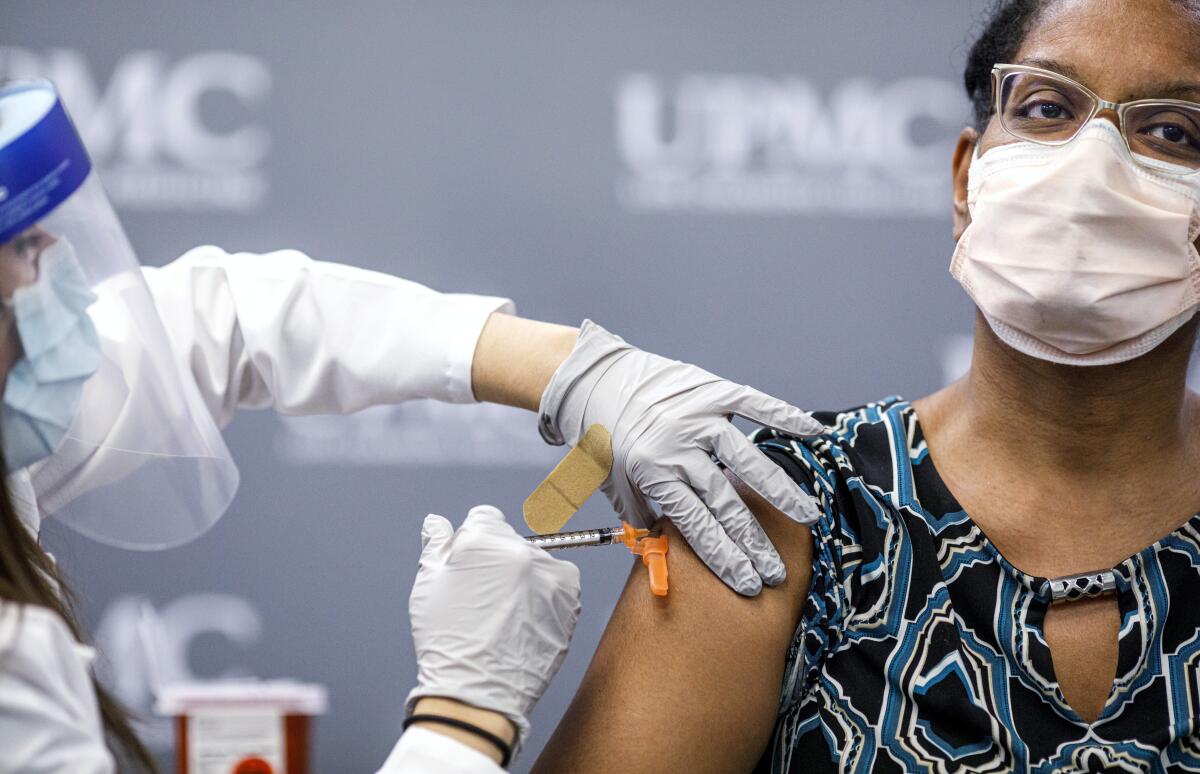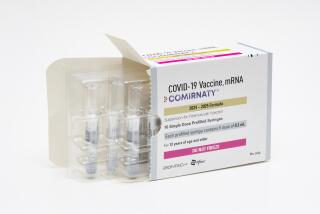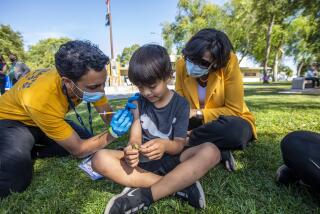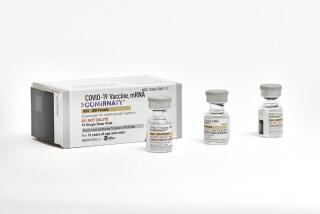U.S. asks states to hasten vaccine delivery, give second dose

- Share via
WASHINGTON — Barely a month into a mass vaccination campaign to stop the COVID-19 pandemic, the Trump administration unexpectedly shifted gears Tuesday to speed the delivery of shots. The move came amid widespread concern over a slow start even as coronavirus cases and deaths reach new highs.
Health and Human Services Secretary Alex Azar announced a series of major changes to increase supply of vaccines and expand the age groups eligible to receive them as well as locations where people can get shots.
One change will have some teeth to it. Azar said that going forward the federal government will base each state’s allocation of vaccines partly on how successful it has been in administering those already provided.
“If you are not using vaccines that you have the right to, then we should be rebalancing to states that are using that vaccine,” Azar said at news conference. That won’t happen overnight, not until officials try to sort out whether lags in reporting could be the reason for what appears to be subpar performance.
Azar also said the government will stop holding back the required second doses of the Pfizer-BioNTech and Moderna vaccines, practically doubling supply. Both those shots require two doses to achieve optimum protection.
Additionally, Washington is urging states to immediately start vaccinating other groups lower down the priority scale, including people age 65 and older and younger people with certain health problems.
The move to increase the supply of vaccines better aligns the outgoing administration with the new Biden-Harris team. On Friday, President-elect Joe Biden said he will rapidly release most available vaccine doses to protect more people. He said he supported immediately releasing vaccines that health authorities were holding back out of caution to guarantee they would be available for people needing their second dose.
“This next phase reflects the urgency of the situation,” said Azar. “Every vaccine dose sitting in a warehouse rather than going into an arm could mean one more death that could have been avoided.”
Initially the government had been holding back second doses as a safety precaution against potential shortfalls in production. Now, officials say they are confident the needed supply will be there. And people needing a second dose will have priority.
Simultaneously, Azar gave states the green light to set up more locations where people can get shots. Those locations can include tens of thousands of pharmacies, federally supported community health centers that serve low-income communities and mass vaccination sites already being set up in some states.
Each state has its own plan for who should be vaccinated, based on recommendations from the federal Centers for Disease Control and Prevention. The CDC recommendations give first priority to healthcare workers and nursing home residents.
But the slow pace of the vaccine rollout has frustrated many Americans while the coronavirus death toll has continued to rise. More than 376,000 people have died, according to the Johns Hopkins University database.
Azar said it was now time to move “to the next phase on the vaccine program” and expand the pool of those eligible to get the first dose and where they can get it.
“We’ve already distributed more vaccine than we have healthcare workers and people in nursing homes,” Azar said. “We’ve got to get to more channels of administration. We’ve got to get it to pharmacies, get it to community health centers.”
He said the federal government “will deploy teams to support states doing mass vaccination efforts if they wish to do so.”
U.S. Surgeon General Jerome Adams said hundreds of thousands of people are getting vaccinated every day across the nation, but the pace of inoculations needs to improve.
“We’re in a race against this virus, and quite frankly, we’re behind,” Adams told “Fox & Friends.” “The good news is that 700,000 people are getting vaccinated every single day. We’re going to hit 1 million people, and we need to continue to pick up that pace.”
President-elect Biden is expected to give a speech Thursday outlining his plan to speed the distribution of vaccines.
The Pfizer-BioNTech vaccine requires a second shot about three weeks after the first vaccination. The Moderna vaccine requires a second shot about four weeks after the first. One-shot vaccines are still undergoing testing.
More to Read
Sign up for Essential California
The most important California stories and recommendations in your inbox every morning.
You may occasionally receive promotional content from the Los Angeles Times.










